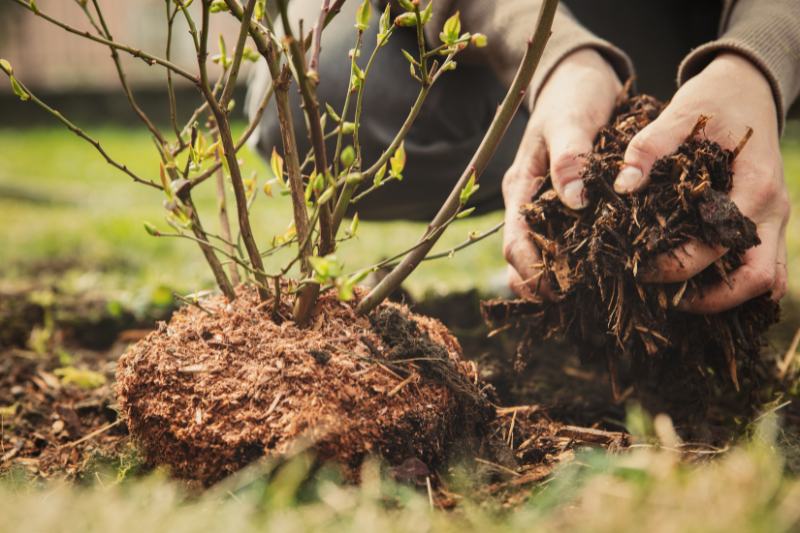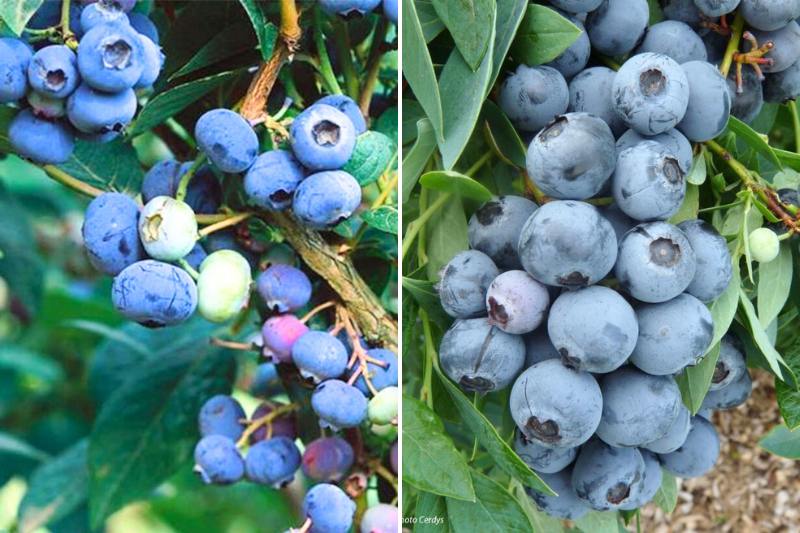Dream of planting a blueberry bush (botanical name Vaccinium corymbosum) in your garden, to harvest delicious black-blue berries? As with any plant, blueberry bush has specific needs that must be met for it to thrive! It is rather demanding… and lack of care can quickly cost you the crop. Discover our tips in this article to successfully plant your blueberry bush.
If you do not yet know which blueberry variety to choose, read our buying guide "Which blueberry bush to choose?" or browse our shop: "Our Blueberry Varieties".
When to plant a blueberry bush?
The ideal period to plant a blueberry bush is in autumn, between September and October. At that time the soil is still warm, which encourages good rooting before winter arrives.
If you missed that window, you can also plant in spring, between March and May, but you must be very vigilant about watering, as blueberry bush dislikes drought when young. You should also forget about a harvest that year.
Where to plant a blueberry bush?
Soil type
Blueberry bush prefers acidophilous soils, with a pH between 4.5 and 5.5, up to 6 at most. To slightly increase soil acidity (for pH values between 5.5 and 6.5), mix heather soil with your garden soil when planting.
For higher pH or calcareous soils, give it a miss, because it is difficult (even unrealistic) to maintain correct acidity over time in such soils. Alternatively try planting in a pot, but bear in mind fruiting will be much reduced.
Regarding soil texture, blueberry bush likes light soils (even sandy) and rich in organic matter. It dislikes heavy clay soils, but you can improve such soil by adding 1/4 compost and 1/4 coarse sand (or perlite) to 1/2 garden soil. You can also add turf or heather soil to improve acidity if necessary.
Exposure
North of the Loire, prefer exposure to non-burning sun (avoid planting at the foot of white walls and the like, as they increase heat) or very light partial shade. In other regions, light partial shade is preferable to allow good fruiting.
Planting tips
1- Using a spade or fork, dig a hole twice as wide as the rootball of your blueberry bush, as it likes to spread its roots. Loosen the soil deeply and widely to allow roots to develop better. Note that planting holes should be spaced one metre apart.

2- Add compost to your garden soil to enrich it. As mentioned above, if pH is a little high, add heather soil to acidify it further.
3- Gently remove the blueberry bush from its pot, soak the rootball in a bucket of water for 10 minutes, then place it in the hole taking care not to break the roots. The plant collar (base of the stem) should be slightly above soil level.
4- Fill the hole with the mixture of garden soil, compost and heather soil if needed. Firm lightly to remove air pockets, but do not overcompact the soil.

5- Water abundantly after planting to encourage establishment and remove air pockets.
Note:
For good fruiting, we recommend planting 2 to 3 blueberry bushes, of different varieties if possible, but flowering at the same time. There are also self-fertile varieties, but planting a second blueberry always improves yield.
Mulching
To retain moisture and protect roots from temperature fluctuations, apply an acidic mulch around the plant: pine needles, wood chips or pine bark. Apply a 5 to 8 cm layer around the base, taking care not to smother the collar.
Watering
Blueberry bush likes moisture, but not waterlogging. After planting, water regularly, especially during dry periods:
- In general, water once or twice a week depending on weather. Soil should remain slightly moist without being waterlogged.
- Ideally, use rainwater or non-calcareous water. Water high in lime will raise soil pH, which is unfavourable for blueberry bush.
Caring for your blueberry bush
Once planted, blueberry bush needs little maintenance, but a few simple actions help ensure good fruit production:
- Pruning: Prune every 3–4 years to maintain good air circulation and encourage better fruiting. Prune at the end of winter, removing dead, damaged or overly old branches.
- Fertilisation: In spring, add some organic fertiliser suited to acidophilous plants (compost, heather soil fertiliser or fruit-tree special) to boost growth and fruit production.
- Protection from birds: Birds love blueberries! If you want to keep your harvest intact, install protective netting during fruiting period.

































Comments